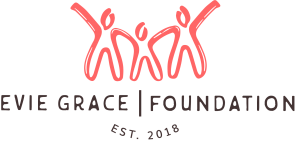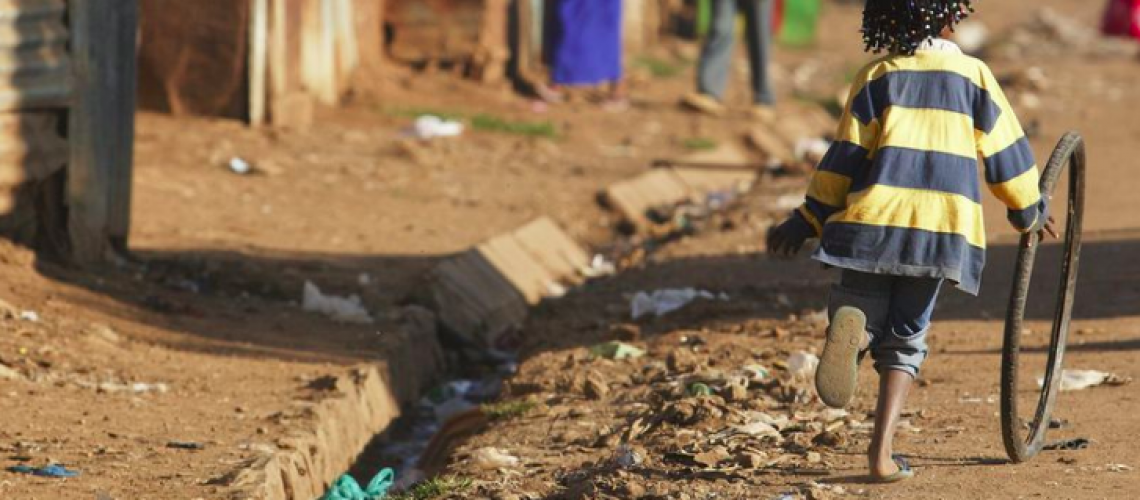Recognized by the sacks slung over their shoulders, the street children of Nairobi, commonly referred to as “chokora”, can be found huddled on street corners at night, or wandering the city in search of food and work during the day. It’s estimated that in Kenya, there are 250,000 children living on the streets, more than 60,000 in the capital, Nairobi.[1] For these children, the street is their primary source of livelihood. They are vulnerable to violence, disease, and hunger, and often lack access to education, healthcare, and familial support.
The protection of vulnerable children is a central objective of numerous human rights organizations all around the world. To date, the Convention on the Rights of the Child (1989) is the most widely ratified international treaty. A great deal of research has been done in relation to the lives of street children in Kenya: how they ended up there, their experiences living on the street, the value of particular interventions, and the role of government support. Still, relatively little is known about street girls.
As Chris Rose, the co-founder of Street Child United, explains, when we discuss ‘street children’ we typically are referring to boys.[2] Girls do constitute a smaller proportion of street children owing to a number of factors, including the availability of domestic work for girls, the reduced rate at which they leave poor home conditions in comparison with boys, and possibly a higher level of support from non-governmental organisations.[3] Still, there are girls slipping through the cracks.
Because there are more boys living on the street than girls, research has tended to focus on their experiences and needs. But the issue goes deeper than this. The girls who are on the street tend to have far lower visibility, which makes it much more difficult to engage with them. Many street girls partake in domestic work during the day or engage in prostitution at night, and thus their presence is much less evident to onlookers.[4] Furthermore, girls are more likely to drop out of outreach programs and less likely to be aware of the available support services.[5] As a result, specific interventions, such as those related to reproductive health, sexual violence, and prostitution, get overlooked.
The reasons children end up on the street in Kenya are relatively similar, regardless of gender. These include extreme poverty, increased rates of HIV, orphanhood, and physical and sexual abuse, as well as the allure of freedom from school or household responsibilities, and social acceptance from peers.[6] However, it’s crucial to understand the specific dangers girls face on the street and the barriers to providing effective support.
Studies show that the vast majority of street children in Kenya are sexually active, often partaking in transactional sex in exchange for money, food, and other basic items such as menstrual pads. In Nairobi, girls will sometimes sleep with men for less than 100 Kenyan Shillings (equivalent to less than $1 AUD).[7] Both boys and girls living on the street face the danger of rape and sexual assault. This exposes them to HIV and other sexually transmitted diseases; however, there are no recent studies that identify the rates of HIV among street children. Girls are also vulnerable to the added danger of unplanned pregnancies. Kate Maina-Vorley, country director for Kenya at UK-based NGO Plan International, has noted a rise in teenage pregnancies and ‘backyard’ abortion attempts since the outbreak of the Covid-19 pandemic, which has also lead to increased gender-based violence.[8] The lack of access to reproductive healthcare and contraception, thus augments the cycle of poverty.
Girls living on the street have also identified street boys as a significant source of the threat of sexual violence. Girls are coerced into sexual activity as a part of initiation rituals into street youth communities where refusal to comply can lead to beatings and gang rape. Girls may also seek out physical protection from street boys in exchange for sex. A number of qualitative studies identify the normalisation of sexual abuse as a salient aspect of street girls’ lived experiences.[3, 4, 10] Vicky Ferguson from the Mombasa based charity Glad’s House, highlighted the need for NGO’s to understand these dynamics when designing interventions, emphasising the need for separate spaces for boys and girls in outreach and housing programs.[9]
It’s important to have a holistic understanding of street girls’ experiences when designing initiatives to help them to understand the ways these experiences mirror and the ways they differ from those of street boys. This also means not solely focusing on their sexual vulnerability and understanding the realities of their economic and social situations. For example, a study in Eldoret, Kenya, found that girls reported a lower daily income than boys, making less money for the same types of work and that girls generally had less schooling, making them more vulnerable to long-term homelessness.[10]
What can be done?
One of the greatest challenges for advocacy groups is the lack of accurate information about the numbers of street children in Kenya; this problem is compounded in relation to the available data on street girls. Quantifying the problem is one of the first steps to addressing it.
Furthermore, greater levels of cooperation between NGOs and community groups can help to build a child protection system where the most vulnerable children are less likely to fall through the cracks. Equipping children with knowledge of their rights and of the available support is crucial. Education on consent is also vital to changing cultural attitudes towards women and girls.
Evie Grace works within communities in East Africa to advocate for street children.
Over the last two years, more than 2000 hours have been dedicated to Human Rights education on issues including child trafficking, bullying, peer pressure, puberty, reproduction, sexual harassment, and rape.
Over the last 12 months, we worked with volunteers all over the world to raise money for the purchase of land for the new Global Hope Rescue and Rehabilitation Centre, a centre that specialises in the care of former street boys, giving them a permanent place to call home. After raising $83,000, we purchased an acre of land near Ngong at the end of September 2020!
Our next major project is to establish a Therapeutic Transitional Home for Girls in Malawi. We aim to rescue girls under the age of 18 from the street and provide them with a safe home, counselling and therapeutic care, and family reunification services. At Evie Grace Foundation, our mission is to offer long-term, life-changing solutions for the children that we support; to provide them with comprehensive care to become self-reliant, productive, and healthy members of their communities.
Sources:
[1] Sitienei, E. C., & Pillay, J. (2018). Life Experiences of Children Living on Streets in Kenya: from the Pot into the Fire. Journal of child & adolescent trauma, 12(2), 201–209. https://doi.org/10.1007/s40653-018-0226-8
[2] ‘Empowering girls living on streets’ 2020, accessed October 1, 2020, from <https://www.theguardian.com/global-development-professionals-network/2013/oct/24/young-girls-streets-ngos>.
[3] Savenstedt, S & Haggstrom, T 2005, ‘Working with girls living on the streets in East Africa: professionals’ experiences’, Journal of Advanced Nursing, vol. 50, no. 5, pp. 489-497.
[4] Shirin Motala, & Smith, T. (2003). Exposed to Risk: Girls and Boys Living on the Streets. Agenda: Empowering Women for Gender Equity, (56), 62-72. doi:10.2307/4066365
[5] Boakye-Boaten A. Street children: Experiences from the streets of Accra. Research Journal of International Studies. 2008;8:76–84.
[6] Johnson, Vicki, Laura Johnson, Okari Magati Boniface, and David Walker. “Breaking Intergenerational Transmissions of Poverty: Perspectives of Street Connected Girls in Nairobi.” In Intergenerational mobilities: relationality age and life course, edited by L. Murray and S. Robertson. Farnham: Ashgate, 2015.
[7] (www.dw.com), D 2020, ‘Kenyan child prostitute: ‘I started prostitution when I started drinking’ | DW | 25.11.2018′, DW.COM, accessed October 1, 2020, from <https://www.dw.com/en/kenyan-child-prostitute-i-started-prostitution-when-i-started-drinking/a-46441837>.
[8] Ram, E, Hayes, G & Rigby, J 2020, ‘‘Babies could be abandoned or killed’: Teen pregnancies soar as Kenya’s girls fall victim to ‘shadow pandemic’’, The Telegraph, accessed October 1, 2020, from <https://www.telegraph.co.uk/global-health/women-and-girls/babies-could-abandoned-killed-teen-pregnancies-soar-kenyas-girls/>.
[9] ‘Empowering girls living on streets’ 2020, accessed October 1, 2020, from <https://www.theguardian.com/global-development-professionals-network/2013/oct/24/young-girls-streets-ngos>.
[10] Sorber, R, Winston, S, Koech, J, Ayuku, D, Hu, L, Hogan, J & Braitstein, P 2014, ‘Social and Economic Characteristics of Street Youth by Gender and Level of Street Involvement in Eldoret, Kenya’, PLoS ONE, vol. 9, no. 5, p. e97587.
Image source: Gate Foundation
Written by: Anna Balis


